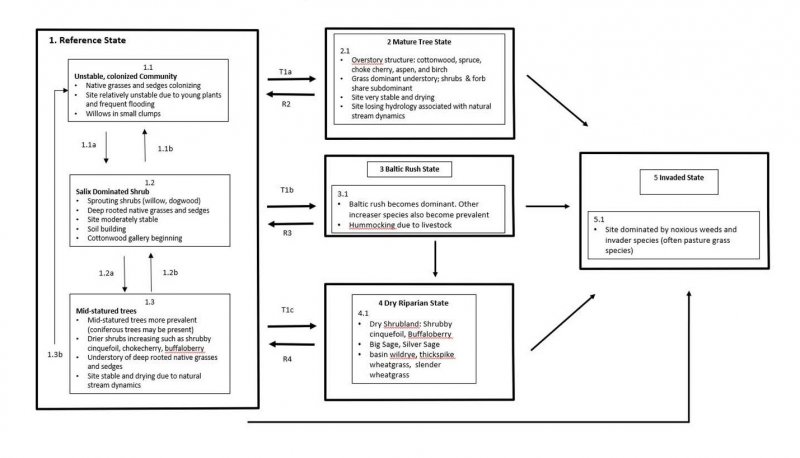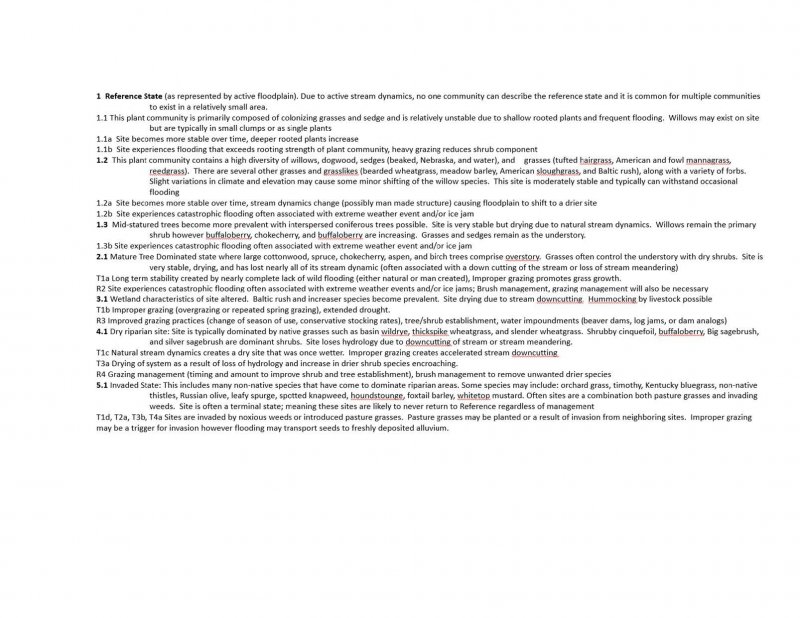
Natural Resources
Conservation Service
Ecological site F043AY584ID
Warm-Frigid, Aquic-Udic, Flood Plains (POBAT/POTR/COSE)
Last updated: 10/14/2020
Accessed: 12/19/2025
General information
Provisional. A provisional ecological site description has undergone quality control and quality assurance review. It contains a working state and transition model and enough information to identify the ecological site.
MLRA notes
Major Land Resource Area (MLRA): 043A–Northern Rocky Mountains
Major Land Resource Area (MLRA): 043A–Northern Rocky Mountains
Major Land Resource Area (MLRA): 043A–Northern Rocky Mountains
Description of MLRAs can be found in: United States Department of Agriculture, Natural Resources Conservation Service. 2006. Land Resource Regions and Major Land Resource Areas of the United States, the Caribbean, and the Pacific Basin. U.S. Department of Agriculture Handbook 296.
Available electronically at: http://www.nrcs.usda.gov/wps/portal/nrcs/detail/soils/ref/?cid=nrcs142p2_053624#handbook
LRU notes
Major land resource area (MLRA): 043A-Northern Rocky Mountains
Modal LRU – 043A09 - Western Bitterroot Foothills
Others where occurring: 043A07 - Eastern Columbia Plateau Embayments
This LRU is composed predominantly of foothills, low mountains and valleys. The soils tend to be loamy andisols, alfisols, mollisols and inceptisols, with mixed to thick ash surfaces. Residuum and colluvium from metasedimentary rock, metamorphics or granite are the dominant parent materials. Soil climate is a mesic or frigid temperature regime and a xeric or udic moisture regime with average annual precipitation around 895 mm (35 inches).
Classification relationships
This ES fits into the National Vegetation Standard’s Northern Rocky Mountain Riparian Forest Alliance.
Ecological site concept
Ecological Site Concept:
This ES is found on somewhat poorly to very poorly drained floodplains and basins of river valleys. A water table is present within 30 inches of the surface during the May-Oct period. They have frigid temperatures and a mature plant community dominated by black cottonwood, aspen and birch with an understory of grasses, Baltic rush and shrubs. They are loamy and may have layers of volcanic ash or organic material. Some sites have been impacted by alluvially transported mine spoil.
Table 1. Dominant plant species
| Tree |
(1) Populus balsamifera ssp. trichocarpa |
|---|---|
| Shrub |
(1) Cornus sericea |
| Herbaceous |
(1) Carex |
Click on box and path labels to scroll to the respective text.

